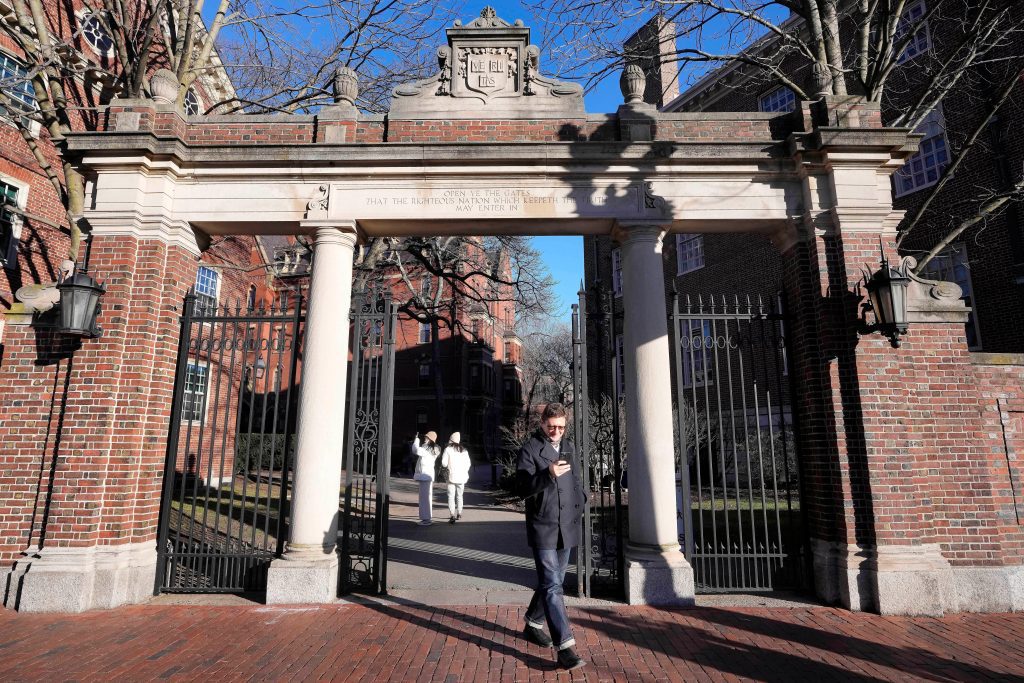By NICK PERRY (Associated Press)
MEREDITH, N.H. (AP) — As more than 2 million graduating high school students from across the United States finalize their decisions on what college to attend this fall, many are facing astonishing costs — in some cases, as much as $95,000.
Several private colleges — some prestigious and others less so — have surpassed the $90,000 mark for the first time this year when setting their yearly costs for tuition, board, meals and other expenses. This means a wealthy family with three children could end up spending over $1 million by the time their youngest child finishes a four-year degree.
However, the listed price doesn't tell the whole story. Many colleges with large endowments have been increasingly focused on making college affordable for students who aren't rich. Lower-income families may only need to pay 10% of the advertised rate, and for some, attending a selective private college may turn out to be cheaper than a state institution.
“Ninety thousand dollars clearly is a lot of money, and it catches people’s attention, for sure,” said Phillip Levine, a professor of economics at Wellesley College near Boston. “But for most people, that is not how much they’re going to pay. The existence of a very generous financial aid system lowers that cost substantially.”
Wellesley is among the colleges where the costs for wealthy students will exceed $90,000 for the first time this fall, with an estimated price tag of $92,000. But the institution points out that nearly 60% of its students will receive financial aid, and the average amount of that aid is more than $62,000, reducing their costs by two-thirds.
However, many potential students this year are experiencing significant delays and anxiety in finding out how much aid they will be offered by colleges due to major problems with the rollout of a new U.S. Department of Education online form that was designed to make applying for federal aid easier. Many colleges rely on information from the form for determining their own aid offers to students.
“The rollout has been pure chaos and an absolute disaster,” said Mark Kantrowitz, a financial aid expert.
In addition to repeated delays and malfunctions, he said, there have been other issues with the new system, including stricter requirements for proof of identity from parents, which is deterring thousands of eligible but undocumented parents from applying — even though their children are U.S. citizens and entitled to aid.
Kantrowitz said that if the significant drop in people applying for aid under the new system continues, it could lead to lower enrollments and even force some institutions to close.
Levine said his research has shown that the amount lower-income students are paying at elite institutions has actually been declining over the past six years. But he worries that sticker shock will put off some students from even applying to institutions like Wellesley.
“People should be making educational decisions based on the actual cost they have to pay, not their perceived cost,” Levine said. “The problem is that the sticker price is the easiest number to know. It gets the most attention.”
Besides Wellesley, some of the other colleges that cost more than $90,000 this year are the University of Southern California at $95,000, Harvey Mudd College in California at $93,000, the University of Pennsylvania at $92,000, Brown University in Rhode Island at $92,000, Dartmouth College in New Hampshire at $91,000, and Boston University at $90,000.
Harvard University in Cambridge, Massachusetts, states that the cost of attendance this fall can be up to $91,000, but emphasizes that the average parent contribution is only $13,000, and nearly a quarter of families pay nothing at all. Harvard can offer a very generous student aid program due to its endowment worth over $50 billion, the largest of any university.
The listed prices may not always be directly comparable because some colleges include expenses like health insurance and travel, while others do not. Also, some colleges that had prices close to $90,000 last year, such as Columbia University in New York and the University of Chicago, have not yet revealed this year’s expected costs.
According to the College Board's recent analysis, the average advertised costs for private nonprofit colleges last year were $60,000, compared to about $29,000 for students at public in-state institutions and $47,000 at public out-of-state institutions.
Kantrowitz stated that the average unmet need for students at four-year colleges is around $10,000 per year.
“So families are forced to borrow that money or come up with that money from some other source, and that’s on top of their share of college costs,” he said.
So is college a good investment?
Kantrowitz believes the answer is yes, as long as students borrow sensibly and complete their studies.
“If you graduate and you don’t take on an unreasonable amount of debt, you should be able to repay that debt in a reasonable amount of time,” Kantrowitz said. “But if you drop out, you have the debt, but not the degree that can help you repay the debt.”









